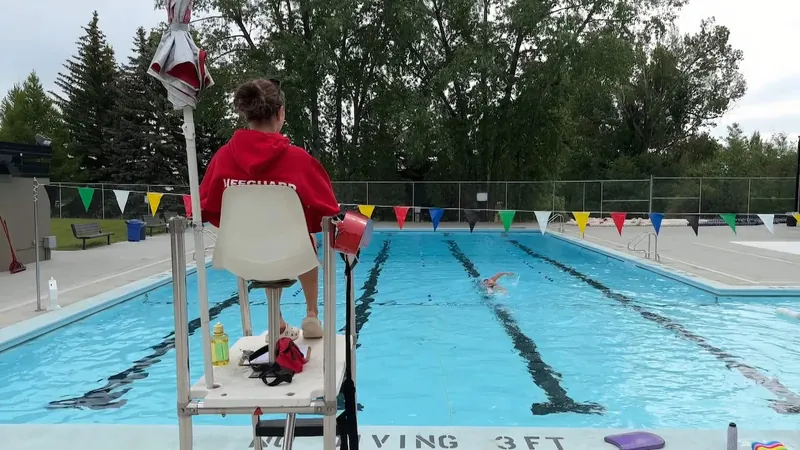
ACES: The Groundbreaking Atomic Clock Ensemble Set to Revolutionize Time Measurement from Space
2024-11-11
Author: Noah
The Atomic Clock Ensemble in Space (ACES)
The Atomic Clock Ensemble in Space (ACES), a pioneering facility developed by the European Space Agency (ESA), is gearing up to conduct groundbreaking experiments on the International Space Station (ISS). Nestled within the Columbus module, ACES represents the next frontier in the quest to understand the intricacies of time and gravity, harnessing a "network of clocks" to compare the precision of timekeeping aboard the ISS with Earth-based systems.
Why Time Flies: The Relativity Connection
According to Albert Einstein's revolutionary theory of general relativity, gravity has a profound influence on the passage of time. Studies conducted on Earth have demonstrated that time accelerates at higher altitudes, such as the peaks of mountains, compared to sea level. ACES aims to test these principles further, conducting measurements while orbiting Earth at an altitude of approximately 400 kilometers. The data collected could unveil new dimensions of our understanding of fundamental physics, potentially challenging or affirming prevailing theories.
Two Innovative Clocks: PHARAO and SHM
At the heart of ACES are two state-of-the-art atomic clocks: PHARAO (Projet d’Horloge Atomique à Refroidissement d’Atomes en Orbite) and SHM (Space Hydrogen Maser).
- **PHARAO**, developed by the French space agency CNES, employs cutting-edge laser technology to cool caesium atoms to nearly absolute zero (-273 degrees Celsius). This innovation allows for unprecedented precision in measuring time and frequency. Unlike standard caesium fountain clocks found on Earth, which require significant height to operate effectively, PHARAO can achieve the same results in the microgravity environment of the ISS, significantly reducing its physical footprint while maintaining stability.
- **SHM**, an active hydrogen maser clock created by Swiss manufacturers Safran Time Technologies, utilizes hydrogen atoms as its timing reference. It is designed to be ten times more stable than similar devices aboard Galileo satellites, ensuring reliable long-term timekeeping.
Together, the clocks provide an extraordinary precision of one second over 300 million years—a feat unrivaled by any terrestrial system.
Set in Space: Operations and Data Collection
Once launched, a robotic arm will install ACES on the Columbus module, where it will function for at least 30 months. The facility aims to gather data continuously through multiple sessions, each lasting 25 days. Operations will be handled from Europe, with coordination through CADMOS in Toulouse, France, and the Columbus Control Centre in Munich, Germany.
Key to ACES' success is its ability to communicate with a network of ground clocks via microwave and laser links. These links will help counteract atmospheric disruptions and ensure accurate time exchanges. Ground-based facilities, including the renowned observatory near Wettzell in Bavaria, will actively participate in the experiment, enhancing the project's accuracy and reliability.
Unlocking New Science
The scientific implications of ACES are extensive and interdisciplinary. By examining the discrepancies between clocks in space and on Earth, researchers will explore Einstein's theory of gravitational time dilation, analyze variations in fundamental physical constants, and potentially uncover evidence of dark matter.
The expansive clock network will also facilitate the measurement of geopotential differences, clock synchronization experiments, and the distribution of global time standards. Notably, the accuracy of ACES will allow unprecedented comparison between the most advanced optical clocks and microwave-based systems, setting a new standard in precision.
Luigi Cacciapuoti, ESA's ACES project scientist, expressed excitement about the prospects: “We are thrilled by the opportunities that the clock network established by ACES will bring for fundamental physics research, geodesy applications, and global timekeeping.” He also noted its expected role in the future redefinition of the standard unit of time—the SI second.
Milestones and Future Endeavors
The journey to realize ACES began over three decades ago, highlighting the complexity and ambition of the technology involved. Engineering advancements have transformed what once required an entire room (in the case of the original PHARAO) into a compact system comparable in size to a small refrigerator.
Thomas Peignier, ACES Principal Engineer, detailed the challenges faced in ensuring the apparatus operates without interference from external factors, especially magnetic fields. The team's dedication to precision and adaptability demonstrates the significant effort invested in this project. Currently, ACES is assembled at Airbus in Friedrichshafen, Germany, completing stringent testing in anticipation of its launch aboard a SpaceX Falcon 9 rocket, expected in early 2025.
Conclusion: The Future of Timekeeping
With ACES, humanity is on the brink of redefining our understanding of time itself. By merging advanced technology, seamless international collaboration, and fundamental science, ACES promises to unlock mysteries of the universe that have perplexed mankind for centuries. The implications could extend far beyond theoretical physics, fundamentally altering how we synchronize and measure time on Earth and beyond. Don’t miss out on witnessing this monumental leap into the future!









 Brasil (PT)
Brasil (PT)
 Canada (EN)
Canada (EN)
 Chile (ES)
Chile (ES)
 Česko (CS)
Česko (CS)
 대한민국 (KO)
대한민국 (KO)
 España (ES)
España (ES)
 France (FR)
France (FR)
 Hong Kong (EN)
Hong Kong (EN)
 Italia (IT)
Italia (IT)
 日本 (JA)
日本 (JA)
 Magyarország (HU)
Magyarország (HU)
 Norge (NO)
Norge (NO)
 Polska (PL)
Polska (PL)
 Schweiz (DE)
Schweiz (DE)
 Singapore (EN)
Singapore (EN)
 Sverige (SV)
Sverige (SV)
 Suomi (FI)
Suomi (FI)
 Türkiye (TR)
Türkiye (TR)
 الإمارات العربية المتحدة (AR)
الإمارات العربية المتحدة (AR)